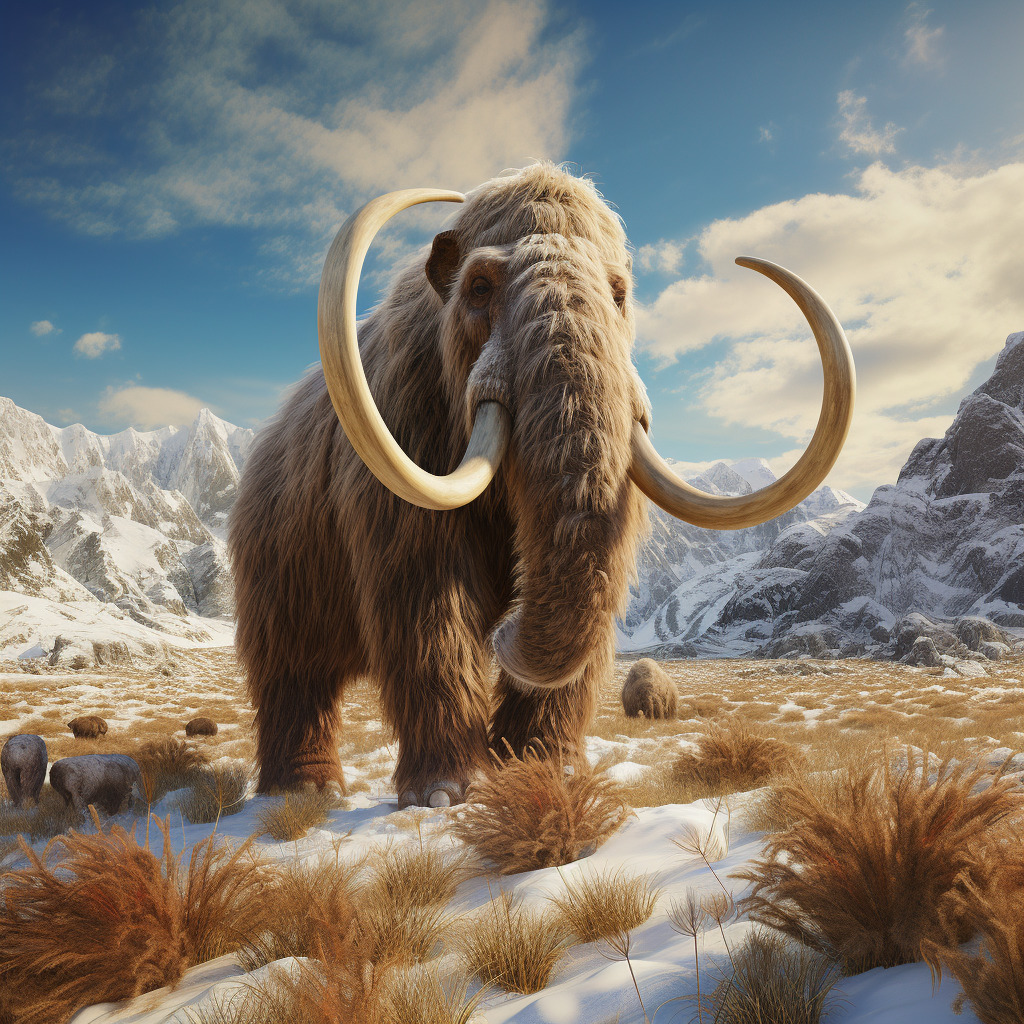The woolly mammoth, a colossal creature that roamed the icy landscapes during the Pleistocene epoch, has long captured human imagination. With its massive tusks and shaggy coat, it stands as a symbol of a bygone era when giants walked the Earth.
Physical Attributes
The woolly mammoth (Mammuthus primigenius) was a marvel of nature. Standing up to 11 feet tall and weighing as much as 6 tons, it was equipped with long, curved tusks that could reach lengths of up to 15 feet. Its thick, shaggy coat, combined with a layer of fat, protected it from the harsh Ice Age temperatures.
Habitat & Lifestyle
These majestic creatures roamed the cold, grassy plains of North America, Europe, and Asia. They lived in herds and were herbivores, primarily grazing on grass, shrubs, and other vegetation. Their large, flat molars were perfectly adapted for grinding tough plant material.
Human Interaction & Extinction
The decline of the woolly mammoth is believed to have been influenced by a combination of climate change and overhunting by early humans. As the Ice Age ended, the mammoth’s habitat began to shrink, and forests replaced grasslands. Additionally, early humans hunted mammoths for their meat, bones, and tusks, further contributing to their decline.
Legacy & Modern Science
Today, the woolly mammoth is often associated with discussions about de-extinction. With advances in genetic engineering, scientists are exploring the possibility of bringing back this iconic creature. While the ethics and feasibility of such endeavors are debated, the woolly mammoth remains a testament to nature’s grandeur.
What’s next?
The tale of the woolly mammoth is a blend of awe and caution. As we marvel at the wonders of our planet’s history, it serves as a reminder of the delicate balance of ecosystems and the profound impact humans can have on them.
